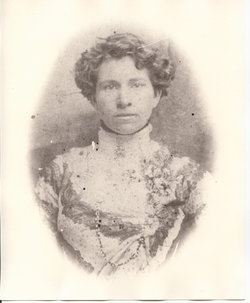

We sell the most popular baits among anglers (and fish!) in this area. If you don’t have your fishing gear with you, take some time to browse our selection in the Vero Tackle Shop or check out some of our fishing pole rentals. The Indian River Lagoon is a renowned fishing destination, known primarily for its snook and tarpon.

Because of that, there are a lot of wildlife there that appreciate the break from the hustle and bustle of people on the river, so you’ll likely be able to get an inside scoop on the lives of local animals if you look closely. It’s also a good idea to keep an eye on the tide when anchoring at these islands to avoid getting stranded.Īs an honorable mention, Hole In The Wall Island is fun to look at, but it is completely inaccessible by boat.
Lauren earman free#
To set foot on these islands requires a little time and patience to find a suitable place to drop the anchor – one that’s free of rocks and seagrasses. There are many other islands to visit: Stonewall Island, Lee Island, and Bedford Island, to name a few! These islands are a mix of natural and spoil islands, but what they all have in common is their lack of docks. Many of the same plants and animals can be found on the spoil islands. Despite being artificial, there are very few signs that this island is different from the natural islands. Known as IR-25 (or Boat Club Island), this island is a spoil island – that is, it was made with the excess material (spoil) that resulted from dredging activity in the Indian River Lagoon. Joe Earman Island Park features a dock for easy access as well as a small recreation area with walking trails and picnic pavilions, making it a perfect no-fuss option for enjoying some island beauty.Ī little further north along the river is another, a much smaller island that also has a dock. One of the first islands to be found is Joe Earman Island, which is part of the Lost Tree Islands Conservation Area, a group of naturally formed islands. Some of them are natural, others are islands that formed as a result of human activity, and all of them are superb places to check out and explore. Barber Bridge and the Wabasso Causeway Bridge (one of our favorite areas!). There are plenty of islands to explore when heading north from our docks and spending time between the Merrill P. Many locations along the river are roosting and nesting hot spots for a variety of bird species, including herons, egrets, ibis, cranes, terns, gulls, and more.
Lauren earman full#
Dozens of birds reside here full time or part time as part of their migration patterns, and the Indian River Lagoon is a great place to see them. Bountiful Birdsīe sure to bring your binoculars! Indian River County is often referred to as a birding paradise. Keep an eye out for no wake zones – they are posted around manatee habitats and thoroughfares to protect these slow-moving animals from injury and death caused by boat propellers. These gentle giants feed almost exclusively on seagrasses, spending most of their days leisurely grazing around the lagoon. Manatees are more frequently seen in the cooler months, but even during warmer parts of the year, they can usually be spotted in the mornings. They are naturally friendly, playful, and curious, often coming right up to boats to say hello and hang out. These intelligent animals are social creatures who communicate with squawks and whistles, and when living inshore, they typically stay in smaller groups of ten or fewer. In the Indian River Lagoon, bottle-nose dolphins are the most common dolphin species. Some of Florida’s most famous wildlife live right here in our stretch of the Indian River Lagoon.Īs you make your way on your adventures, it’s extremely likely – almost guaranteed – that you will see some of our local dolphin friends. Colloquially referred to as “walking trees” due to their unique prop root system, these important tropical plants protect the coastline and provide shelter and food to many species of birds, fish, and marine animals like otters and sea turtles. There are three main species of mangrove trees in Florida, but the one most commonly found on the lagoon is the most iconic: the red mangrove.

In addition to the beautiful riverside homes, there are also mangrove trees lining every coast on the lagoon.


 0 kommentar(er)
0 kommentar(er)
